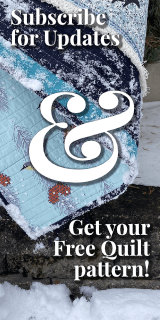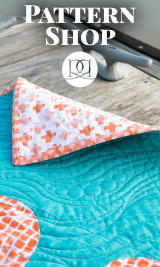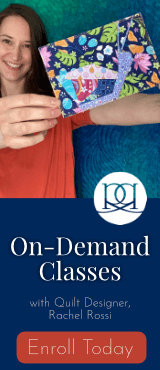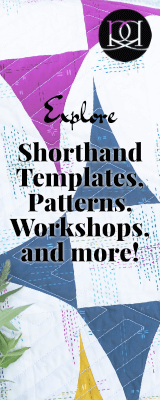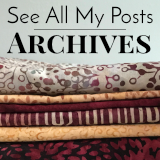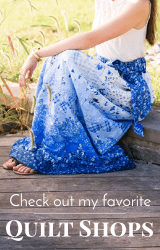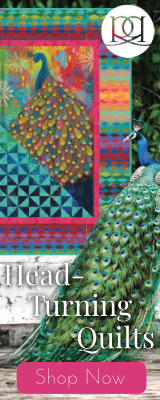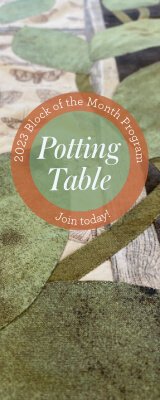
Curves, curves, curves.
There’s a list of things that I’ve wanted to learn for a long time, put them off, and when I finally did learn, kicked myself for lacking the confidence to try in the first place! If I’ve learned anything, it’s this: sewing and quilting isn’t hard…it just takes patience and a tiny bit of practice.
Things I’ve Learned from Giving It A Shot:
- So far, I’ve learned that applique is a patience game — not hard.
- Paper piecing is the bomb.
- Sergers have a bad reputation and are God’s gift to sewists.
- Binding is painfully slow, but again, not hard.
- And sewing curves only acts like it’s fancy…it’s really not!
Curved Piecing is Easier than You Think
Today, I want to talk to you about curves. They are THE BEST! {Just between you and me, there’s a Rachel Rossi Original coming out this fall with a curve or two!} And I want you to stop quaking in your boots and just give curves a try. So, today I challenge you to grab two scrap pieces of fabric and prove me wrong!
I first tried my hand at curved piecing on a quilt that my guild members and I worked on for a project for our local hospice group (this project will be featured on the blog soon!). We wanted a curvy back and despite my lack of any experience with curved piecing, my hand shot up as a volunteer to make it. I later had official training during a Saturday class with Melanie Tuazon (that post is also coming soon!). And now I’m officially in the curve club.
How to Start Sewing Curved Pieces
Alright, that’s enough jibber jabber…I feel like a recipe blogger who puts the recipe about 400 pages down after a story about their uncle’s cousin’s sister’s dog.
What You’ll Need
- Small 45mm rotary cutter
- Curve Template (Paper or Acrylic)
- Elmer’s Glue Stick
- Matching Thread
- Sewing Machine
Cutting Templates for Curved Piecing
Curved piecing typically uses a template or ruler for cutting. Cut out the two pieces in different fabrics. For my images below, I’ve used a template that I created for an Orange Peel Block (yep…no applique involved!).

You can use a paper template and cut with a regular pair of fabric scissors. There are also acrylic templates for more accurate cutting. If you’re using a template, you’ll want to use a small 45mm rotary cutter, like this one:
Aligning Curved Pieces
First, lay your outside piece on a flat surface, right side up.
Then, lay your inside piece (I’ll call this the “petal” from here on out) right side down on top of the outside piece. Match the centers.

There’s two ways to line up your edges. Many people like to pin the heck out of their fabrics, which you are welcome to do. I’ve found better luck with using a small amount of elmer’s glue (glue stick) along the edge of my fabrics. This holds them in place and I don’t have to pull pins out constantly.

As I was saying, now you’ll line up your curved edges. Match the raw edges and ignore the bubbly fabric that you’re creating. It’ll all work out in the end, promise!
Sewing Curved Pieces
Now you’ll simply stitch 1/4″ around your curved edge. While you’re doing this, try not to overthink it. Just pay attention to the fabric that is under your needle right now. If that’s getting 1/4″ seam, then you’re doing it right!
Pressing Curved Pieces
Now, flatten out your curved block on an ironing board, right side down. The seams will definitely have a preference of where they go. Unless the pattern suggests a different direction, let the seams press to whatever side feels right.

Flip over and press the top flat.

If there’s more to sew, like there is on an Orange Peel block, then sew your remaining pieces on.

Once it’s all together, trim your blocks down for crisp, straight edges. Curved piecing typically allows for a larger block than needed, since curves can be a bit unpredictable. 9 times out of 10, it won’t look pretty until you trim it down.

There you have it! Your very first taste of curves! Isn’t it oddly satisfying?! I hope that you’ll give it a few more tries and really work out this new skill of yours.

Related Posts
Enjoy reading this post? To make sure you don’t miss a thing, follow me on Pinterest, Facebook, and Instagram and sign up for an email subscription to my blog.

